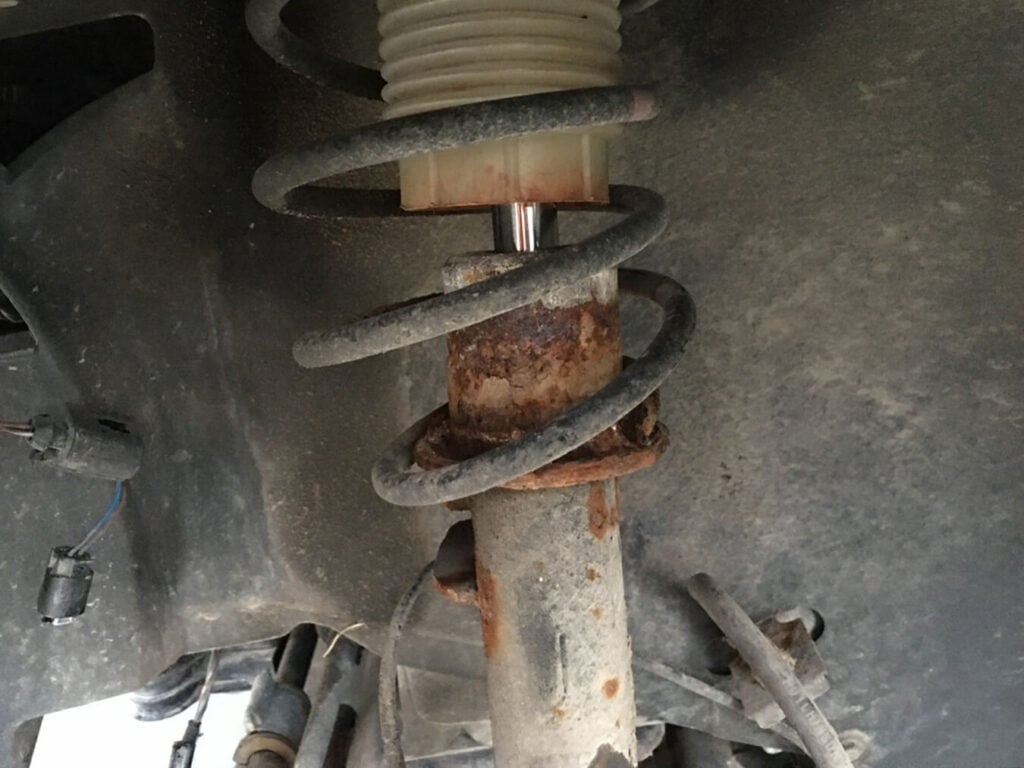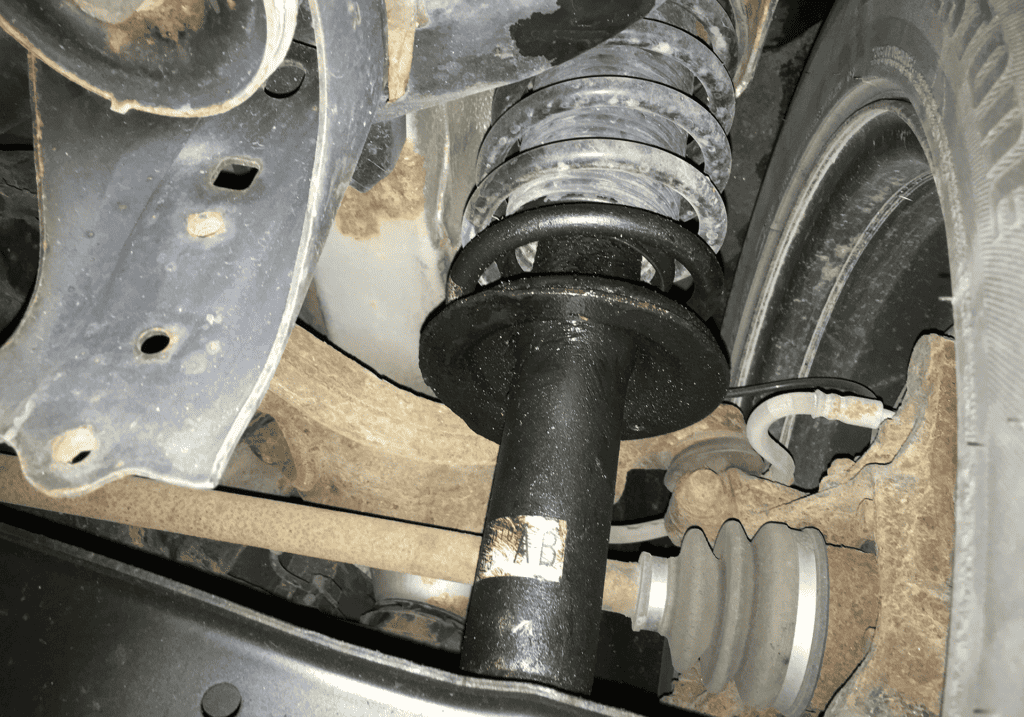Why Ignoring Your Shocks and Struts is a Bumpy Ride to Danger
Picture this: you’re cruising down the highway, not a care in the world—until your car hits a small bump and suddenly it feels like you’re navigating a ship in stormy seas. Shocks and struts are to cars what your spine is to your body. Neglecting them could take you down a path with disastrous implications, both for your vehicle and your wallet.

The Anatomy of a Crisis: What Goes Wrong with Poorly-Maintained Shocks and Struts
Imagine your car as a well-rehearsed orchestra, where shocks and struts play the role of the unsung heroes in the percussion section. They don’t get the limelight like the violins or the pianos (think: the engine or the GPS), but they are integral in making the performance—your drive—a seamless experience. When well-maintained, shocks and struts harmonize your car’s movements with the road, making for a drive that’s smooth, stable, and safe.
However, if you neglect these components, it’s like having drummers and timpanists out of rhythm and sync. Your vehicle’s performance falters, transforming the drive into something uncomfortable at best and hazardous at worst. One of the first things you’ll notice is that the vehicle’s ride quality deteriorates. Where once you glided over road irregularities, now you feel every bump and dip. It’s not just about comfort; this wobbly, shaky driving experience affects the car’s stability, turning and braking response. Your vehicle might start to sway during turns, bounce excessively over bumps, and take longer distances to come to a complete stop. This compromises not only your safety but also that of everyone else on the road.
The ramifications of poorly-maintained shocks and struts don’t end there. When they are compromised, other systems in your car, like your tires and brakes, have to work extra hard to compensate. Your tires will wear out unevenly, and your brakes will have to exert more force to halt the vehicle, thus leading to premature wear and tear on these essential components. Over time, these problems don’t just persist; they escalate, putting increasing stress on related vehicle parts. Before you know it, you’re not just dealing with failed shocks and struts but also with an array of other problems that have sprouted due to this root issue.
Red Flags on the Road: Identifying Bad Shock Absorbers and Struts
• Nose-Dive During Braking: One of the most apparent signs is the nose of your car diving sharply when you apply the brakes. This isn’t just unsettling; it can increase your stopping distance.
• Excessive Bouncing and Shaking: If your car starts to bounce like it’s on a pogo stick when you hit a bump or pothole, that’s your shocks and struts crying for attention. A well-functioning system should keep the car stable and minimize bounce.
• Reduced Steering Response: Poorly maintained shocks and struts can cause the steering to feel loose or less responsive than usual, especially during turns. This can affect your ability to control the vehicle effectively.
• Uneven Tire Wear: Your tires can tell tales. If you notice uneven or abnormal tire wear, such as cupping, it’s often due to failing shocks and struts that can’t keep the tires firmly on the road.
• Swaying and Leaning: You might experience your vehicle swaying or leaning during turns or when it’s windy. This is a clear indicator that your shocks and struts need an inspection.
• Fluid Leaks: One of the visual clues to look out for is leaking fluid from the shocks or struts. A leak usually indicates that they are worn out and need immediate replacement.
• Unusual Noises: Rattling or clunking noises coming from the suspension system are warning signs that shouldn’t be ignored. These sounds often mean that the shocks or struts are loose or damaged.
Unsafe at Any Speed: The Dangers of Driving with Worn Shocks and Struts
Driving with worn-out shocks and struts isn’t just a gamble; it’s akin to playing Russian roulette with your safety. The first victim of degraded shocks and struts is your vehicle’s stability. You might notice swaying or leaning during turns, or a feeling of “floating” while driving at high speeds. This instability hampers your ability to control the vehicle during sudden maneuvers, making accidents more likely. Even at moderate speeds, the risks are exacerbated, as the degraded parts cannot effectively manage the weight and movements of the vehicle.
The second crucial impact is on your braking efficiency. Your car’s stopping distance could increase significantly, especially when you are driving on wet or uneven surfaces. Imagine needing to make a quick stop but your car protests, taking its own sweet time to come to a halt. Not only does this put you at risk, but it also endangers pedestrians and other motorists. This isn’t just about car performance degrading; it’s an immediate and dangerous threat that affects everyone on the road.
Caught Off Guard: What Happens if a Strut Breaks While Driving
A broken strut isn’t a minor hiccup; it’s a full-blown catastrophe waiting to happen. The moment a strut breaks, your car can tilt or lean drastically, causing a jarring imbalance. This is equivalent to a person suddenly losing their footing and tumbling down—it’s sudden, it’s unexpected, and it severely impairs your control over the vehicle. In the worst-case scenario, a broken strut could lead to your car flipping over, especially if you are moving at high speeds or navigating a turn.
This isn’t something to take lightly. The risk of a collision skyrockets, and the chance of keeping control of your car nosedives. We’re talking potential life-threatening situations, not just for you but also for anyone sharing the road with you. So, the next time you ponder whether that clunking noise from your suspension can wait, remember that it’s not just about inconvenience; it’s about the safety of yourself and others.
Survival Guide: How to Minimize Risks While Waiting for Repairs
Let’s be real: there’s no substitute for immediate repairs, but sometimes you find yourself in a tough spot. If you absolutely must drive a car with bad shocks and struts, the first rule is to limit your speed. The faster you go, the less control you’ll have, especially during turns or when navigating uneven roads. It’s a simple equation: lower speed equals lower risk. But keep in mind that even at reduced speeds, the risks are still present.
The second piece of advice is to avoid highways and stick to local roads where speeds are generally slower and you have more control over your vehicle. High-speed roads amplify the risks associated with bad shocks and struts. Even then, this is a stop-gap measure, something to tide you over until you can get the necessary repairs. Don’t mistake these short-term fixes as solutions. The only real solution is to get those worn-out parts replaced as soon as possible. The consequences of not doing so are both dangerous and expensive in the long run.

Don’t Break the Bank: Potential Repairs and Cost Breakdown
• Initial Replacement Costs: For just the shock and strut parts, you’re looking at a range of $250 to $600 in Canada. However, this doesn’t include labor, which can be another substantial expense depending on your mechanic’s hourly rate.
• Labor Expenses: Installation is not a DIY task for most people. Labor can cost anywhere from $100 to $300, depending on the complexity of the job and your location.
• Cost of Wheel Alignment: Often, a wheel alignment will be recommended after replacing shocks and struts, adding another $75 to $200 to your bill.
• Associated Damages: Neglecting your shocks and struts can lead to extra issues like uneven tire wear, damaged suspension parts, or even brake system wear. Fixing these can add hundreds of dollars more to your repair bill.
• Potential for Complete Failure: Ignoring these issues can lead to catastrophic failure, resulting in an unmanageable vehicle and, potentially, a dangerous accident. In such cases, you might have to deal with collision repairs, which can cost thousands.
• Long-Term Costs: Beyond the immediate repair bill, keep in mind the long-term costs of driving with bad shocks and struts. Poor handling can lead to accidents, and uneven tire wear can mean you’ll have to replace tires more often—both of which can add significant expenses over time.
Proactive Care Beats Reactive Repair
In summary, the stakes are high when it comes to the condition of your shocks and struts. Not only do you risk your own safety, but you also risk emptying your wallet on avoidable repairs. It’s a classic case of “pay now or pay more later,” so make the wise choice. For Canadians looking for a hassle-free solution, Uchanics offers mobile mechanic services that come to you, saving you both time and the stress of driving a compromised vehicle. Remember, a small bump in the road doesn’t have to become a mountain of problems. Take action early, and drive safe.
